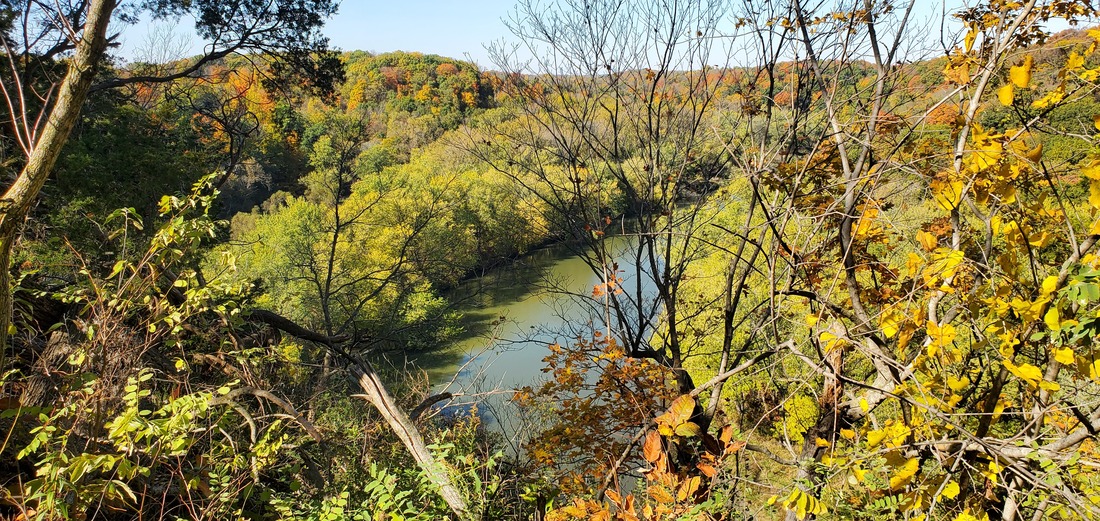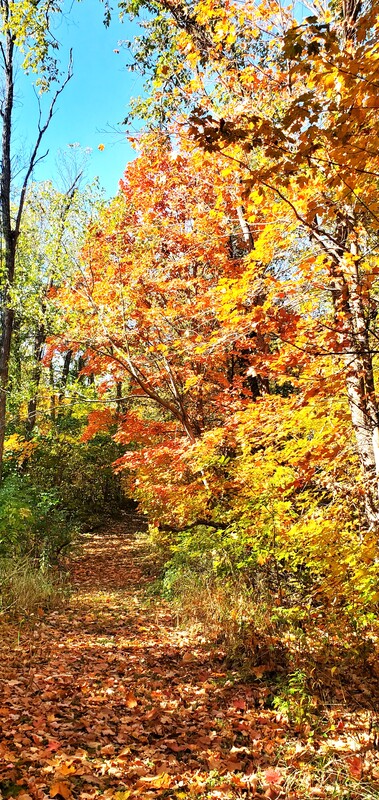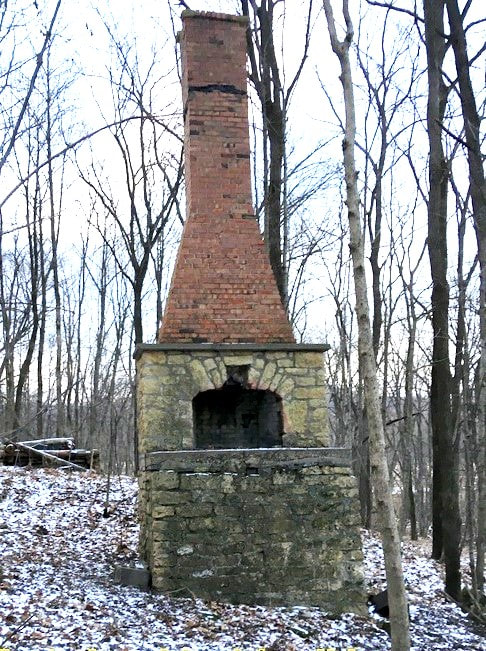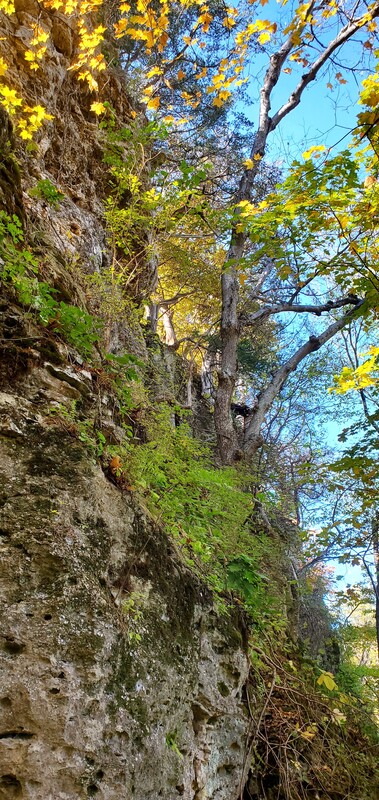A grace note in music is a tiny ornamental note heralding the next big, flourishing sound. In a similar way, Blackhawk Wildlife Area, is a smallish, 180-acre refuge at the southern edge of the hilly, rocky Driftless Area that spreads over 24,000 square miles north to northeast. Owned and managed by the Jackson County Conservation Board and located six miles west of Maquoketa, Blackhawk offers a Driftless preview of prairie remnants, woodland trails, river overlooks and glimpses into the local past.
Jackson County Naturalist Tony Vorwald considers Blackhawk a little gem, even a bit of a diamond in the rough. “In spring you’ll find ephemeral flowers like snow trillium, spring beauty, and trout lily,” he says. He mentions the refuge’s tall bluffs overlooking the Maquoketa River, mature oak stands, and cool summer micro-climate rock outcrops harboring relict northern monkshood wildflowers that once flourished at the edges of the glaciers.
But there’s a “good, the bad, and the ugly,” too, he says, as the county works at restoring habitat compromised prior to the land becoming a Jackson County Conservation property.
The preserve’s two miles of hiking trails begin in the uplands with a few strands of remnant prairie. But prairies need occasional fire to prevent forest encroachment. Prairie fire hadn’t occurred for decades, Vorwald explains, so the Conservation staff has had to remove woody species, replant some prairie, and maintain the area through prescribed burns to bring it back to prairie health.
From the prairie, a trail swings down into the hardwood forest, granting occasional bluff-top glimpses across the blazing reds and yellows lining a bend of the Maquoketa River. Leaf litter along the trail and tell-tale tree bark revealed walnut, shagbark hickory, maple, and oak. During my solo hike, occasional shadows swooped overhead like raptors, but turned out to be large, swirling oak leaves, each taking its individual turn to settle on the forest floor.
Occasional timber harvest of red oaks and walnuts provides some income for the Conservation Board, but more importantly maintains and improves habitat, Vorwald explains. Hardwood forests need occasional canopy breaks for regeneration. Too much shade will age out a healthy forest. To restore the hardwood forest after a timber harvest, the Conservation Board planted 2000 red oak and walnut trees, which at 30 years old are now coming into their prime.
The geologist’s eye is next engaged as the trail descends steeply alongside a 50-foot limestone bluff laid down 420 million years ago in an ancient, shallow sea. Caves and indentations pock its lateral face as the bluff curves away from the trail. Sturdy boots and a hiking stick aid in the rock-strewn descent. It would be easy to leave an ankle behind on the path I’ve chosen.
The base of the trail opens up to a Maquoketa River flood plain. At first glance the flood plain appears to be the least adorned of the Blackhawk habitats. But the flood plain provides cover for neotropical birds such as indigo buntings and scarlet tanagers migrating north in spring, says Vorwald.
The flood plain is also where the wildlife refuge brushes up against its human past. Along the river and separated from the rest of the preserve by private property lies a parcel that housed YMCA Camp Blackhawk from 1918 till the 1950s. Little remains of the old Y camp except for a few footings and foundations. But the likewise defunct Boy Scout Camp Iten, removed a bit from the river, is more generous with its artifacts left behind from its reign from the 1930s to the 1970s. Where else in the forest will you find old dishware or a remnant chimney from a disappeared Scout camp dining hall? A 1931 Telegraph Herald / Times Journal article hailed the forty-some volunteers who descended into the valley floor to build sleeping cabins, latrines, a ranger’s cabin, and a 46 X 64-foot lodge/mess hall that eventually left only its chimney behind in the woods.
Youthful campers left relatively little impact on what would become the Blackhawk Wildlife Area. But part of the uplands had seen a more damaging past, utilized by area industry as a dumping grounds for old machinery and parts. In preparation for the land’s transition to a wildlife area in the 1980s, the businesses cleaned up the site, covered it with fresh soil, and planted black locusts. Unfortunately, the thorny locusts are an aggressive species that the County is now working to replace.
It was a lazy day’s solitary hike. The trail back up to the parking lot sprung a few more surprises, with rocky knolls popping out from behind the twists and bends. Winding back to where I started left me with the feeling that I was at the edge of something bigger.
The 180-acre Blackhawk Wildlife Area is just one of 38 Jackson County Conservation properties that altogether comprise over 2500 protected acres. But even more, Blackhawk is a grace note at the edge of the Driftless, announcing ever-so-briefly and elegantly the mysterious hills and valleys that stretch far beyond.
January 2024




